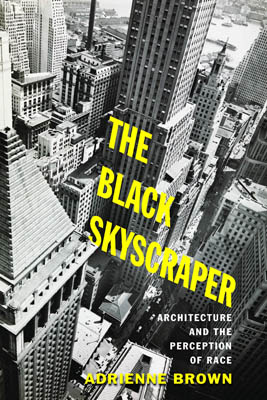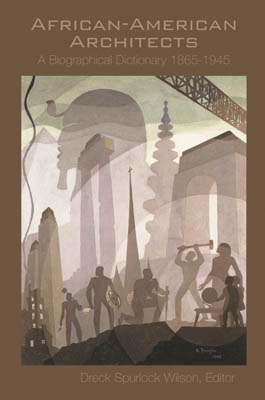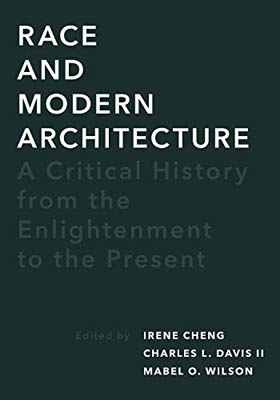Copyright © 2025 Motivate Media Group. All rights reserved.
id library: Books that explore the role of race within the built environment
Our reading list this months looks at how issues on race presents itself in architecture

Exploring the role of race within the built environment, these three books shed light on a topic that deserves urgent re-examining at a critical time for racial justice
Race and Modern Architecture: A Critical History from the Enlightenment to the Present
by Irene Cheng, Charles L Davis and Mabel O Wilson
When Mabel O. Wilson looked through 28,000 objects within The Museum of Modern Art’s Architecture and Design archives, she was stunned to find that they had no records on the works of African-American architects. Keep in mind that this is the first museum in the world to have an architecture collection. Race and Modern Architecture – a book Wilson co-edited with Irene Cheng and Charles L Davis – exposes how modern architecture and culture has been heavily influenced by representation, inequality and racism. The book enlightens its readers by writing back race into architectural history, shedding new light on the built environment and maybe shaking the very foundations of architecture itself.
 The Black Skyscraper: Architecture and the Perception of Race
The Black Skyscraper: Architecture and the Perception of Race
by Adrienne Brown
Many of us would consider the metaphorical juxtaposition of skyscrapers and racial anxiety in the United States to be a farfetched argument. Adrienne Brown disagrees. With developments of the first skyscrapers in the 1880s, environments could expand vertically as well as horizontally. Chronicling the soaring skyscrapers from Chicago’s early 10-storey tower to the completion of the 102-storey Empire State Building in 1931, in The Black Skyscraper: Architecture and the Perception of Race, Adrienne Brown gives a detailed insight into how scale and proximity affect not only the shape of the city but also shapes our understanding of race and how the early skyscraper threatened to reveal the ‘nothingness’ of race at a time when the superpower coveted nothing more than to assert and prolong its purpose. The book claims that ever since skyscrapers first ascended, they, in turn, challenged human beings to cultivate new ways of seeing and relating to others.
 African American Architects: A Biographical Dictionary, 1865-1945
African American Architects: A Biographical Dictionary, 1865-1945
by Dreck Spurlock Wilson
In February this year, Harvard celebrated the accomplishments of the lead designer of its Widener Library – African-American architect Julian Abele. In a series of articles published on the website, the Ivy League university admitted that the contributions of the Philadelphia-born architect were largely ignored and hence long overdue. It is that kind of misrepresentation that African American Architects: A Biographical Dictionary, 1865-1945 strives to avoid. Written by over 100 experts and edited by Dreck Spurlock Wilson, the book shines a spotlight on the lives and careers of over 160 African-American Architects. Each entry is peppered with a write-up, an all-important list of known works and a bibliography of published sources. Starting from the last quarter of the nineteenth century – an intense period in the United States history that laid the foundations for social change – the book also features over 200 portraits of an appendix of buildings sorted by geographic location.
The Latest
How Eywa’s design execution is both challenging and exceptional
Mihir Sanganee, Chief Strategy Officer and Co-Founder at Designsmith shares the journey behind shaping the interior fitout of this regenerative design project
Design Take: MEI by 4SPACE
Where heritage meets modern design.
The Choreographer of Letters
Taking place at the Bassam Freiha Art Foundation until 25 January 2026, this landmark exhibition features Nja Mahdaoui, one of the most influential figures in Arab modern art
A Home Away from Home
This home, designed by Blush International at the Atlantis The Royal Residences, perfectly balances practicality and beauty
Design Take: China Tang Dubai
Heritage aesthetics redefined through scale, texture, and vision.
Dubai Design Week: A Retrospective
The identity team were actively involved in Dubai Design Week and Downtown Design, capturing collaborations and taking part in key dialogues with the industry. Here’s an overview.
Highlights of Cairo Design Week 2025
Art, architecture, and culture shaped up this year's Cairo Design Week.
A Modern Haven
Sophie Paterson Interiors brings a refined, contemporary sensibility to a family home in Oman, blending soft luxury with subtle nods to local heritage
Past Reveals Future
Maison&Objet Paris returns from 15 to 19 January 2026 under the banner of excellence and savoir-faire
Sensory Design
Designed by Wangan Studio, this avant-garde space, dedicated to care, feels like a contemporary art gallery
Winner’s Panel with IF Hub
identity gathered for a conversation on 'The Art of Design - Curation and Storytelling'.
Building Spaces That Endure
identity hosted a panel in collaboration with GROHE.

















